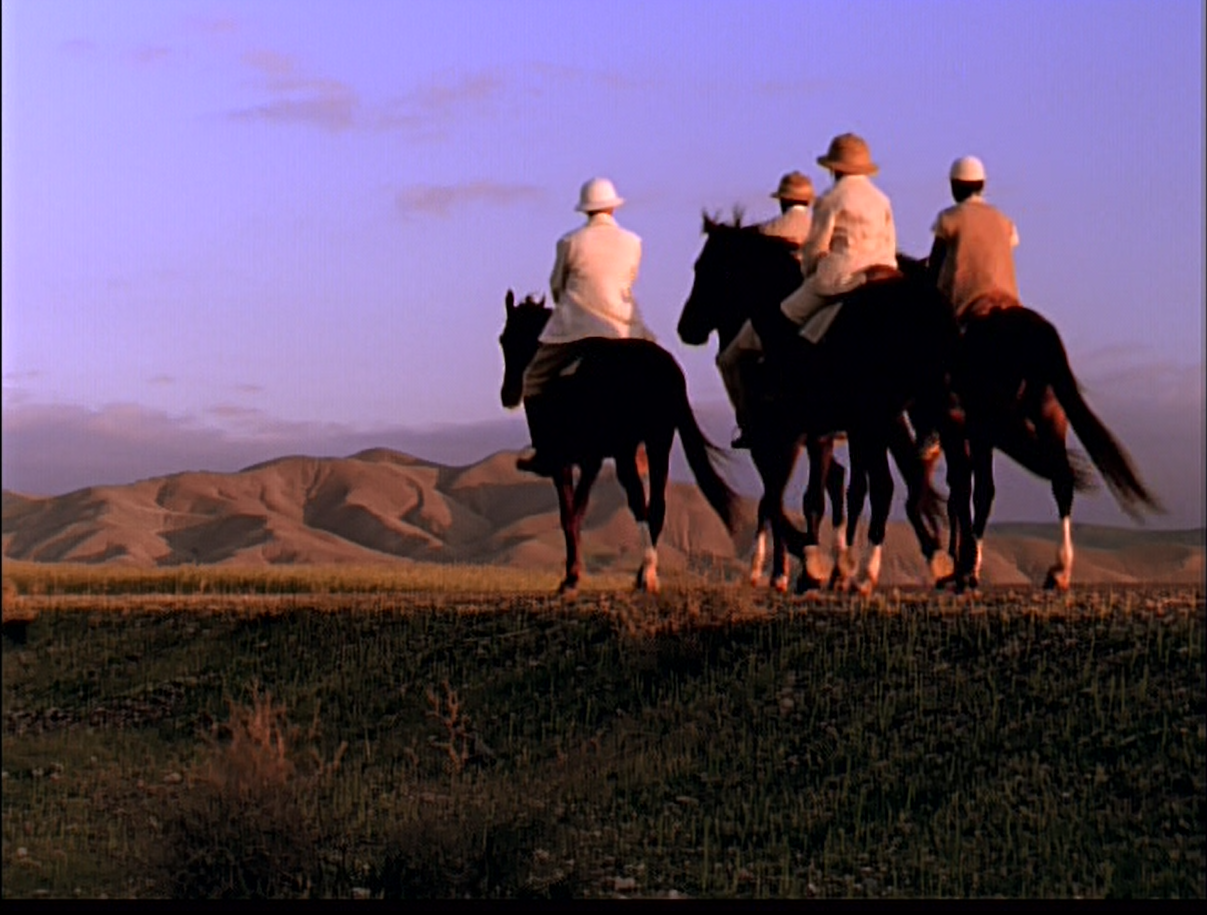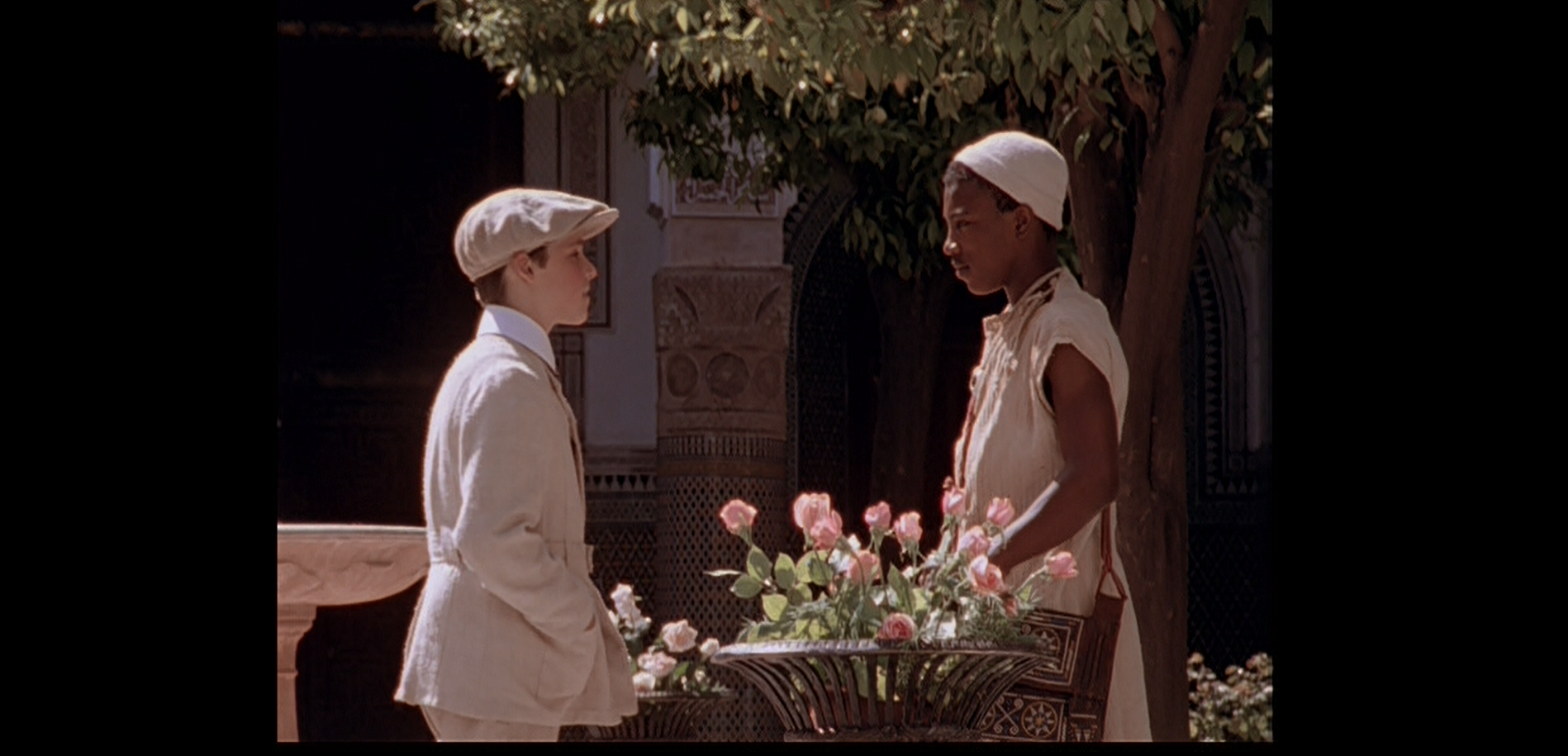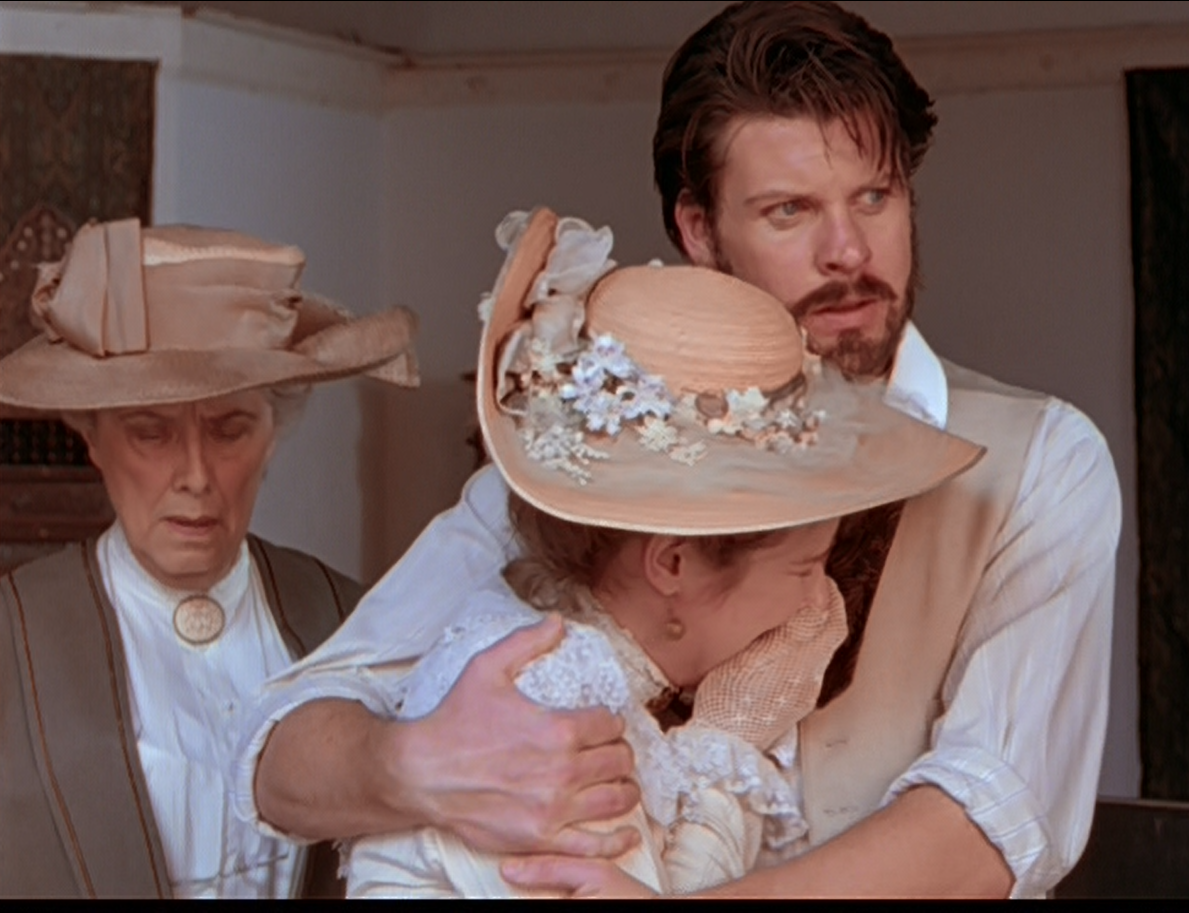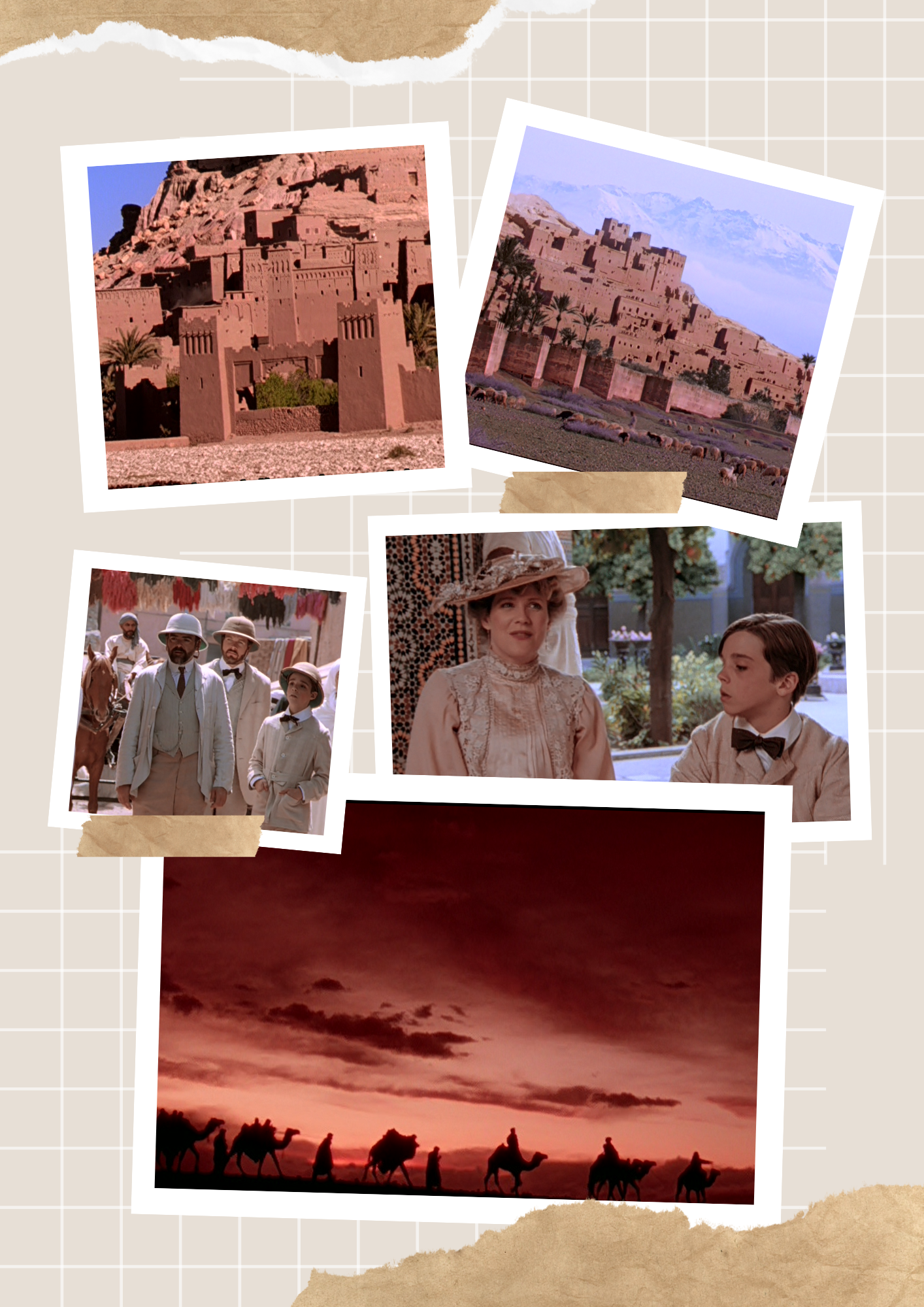This episode is the second half of the My First Adventure movie, collecting the earliest adventures of Young Indiana Jones. The episode never aired on television, and it’s my understanding that it was filmed years after cancellation, specifically for the DVD sets. This explains why Corey Carrier (Young Indy) looks and sounds older than the Egypt 1908 segment.
After their Egyptian escapades, Indy and his parents, accompanied by Miss Seymour, travel to Tangier, Morocco, and are invited to have tea with the Sharifa of Jebel, an Englishwoman named Emily Keene.
Anna Jones notes the religious intolerance of the region, while Miss Seymour comments that Keene “married a native” and the area is “uncivilized.” Likely common perceptions of the early 1900s from a prim British tutor, but unfortunate dialogue all the same. Just the start of some problematic things with this episode.

A young boy named Omar pours the tea but then joins Indy in the garden to play. We learn that Omar is a slave who doesn’t attend school, but he was required by the Sharifa to learn English. She orders him to join Indy on his journey, so that he’ll have a companion around his age.
The Jones family and their entourage then head to Ouzzane, a town in northern Morocco, where they will stay at Walter Harris’s home. Harris is a correspondent for the British newspaper The Times. As they travel on camels, Indy tells Omar about other places and climates and tells him that he plans to be an archeologist when he grows up.
Omar says he will be a slave always, and it prompts a discussion around the table once they arrive in Ouzzane. They are joined by a Sheikh. Miss Seymour surprisingly says, “I do not believe anyone would trade freedom of choice for a roof over their head, no matter how lovely the roof,” but the Sheikh argues that Omar is well-fed and clothed, and life would be much harsher otherwise.
Indy tells Omar about how to get to Russia and says Omar doesn’t have to bow around him because they’re friends.

Later, Indy thinks he’s caught an intruder, but it’s Walter Harris returning home in disguise. He tells Indy about a Grand Vizier who had offended the Sultan, and now his head is on a stick and displayed as a warning to all. Indy is fascinated by this, and I do think he has a morbid curiosity about such things. Relatable. He wanted to know if the man’s eyes were still open. “He stares but sees nothing,” Harris says in Arabic. Indy surprises him by understanding, and Harris says, “Oh you have a talent for this language.” Indy really took T.E. Lawrence’s advice to heart and is beginning to learn the language whenever he visits a new place. “I’ve never seen a salted head before. I mean, they don’t do stuff like that in New Jersey,” he tells Harris. He wonders if there are maggots and vultures and if the tongue is swollen. I mean, I’d probably wonder the same things.
Indy follows Harris’s disguise routine by applying brown makeup to blend in and tries to convince Omar to go with him to the marketplace to see the head. Problematic? Yes. But it does play into the plot of the rest of the episode, which addresses uncomfortable topics like slavery. But probably not in the best or most educational way, unfortunately. Omar is reluctant to go and warns him not to speak to anyone.
The boys are unable to locate the head, but slavers capture them and drag them off into the desert. A night raid brings another group of slavers who steal them from the first group, and then they are displayed for sale at auction. This is just a really uncomfortable episode to watch, with anyone being auctioned off, but especially children. Fortunately, Mr. Harris shows up just in time to bid for Indy, who urges him to bid for Omar as well. There’s a heated bidding war with the guy that Mr. Harris beat out to get Indy, but Indy begins speaking in Arabic, saying Omar is mute. Indy and Mr. Harris act out a dramatic scene, making Omar appear less desirable, and the other bidder bows out.
However, he realizes moments later that Omar can, in fact, speak, but Mr. Harris gets them away and returns the boys to the very anxious Mr. and Mrs. Jones.
The boys bid farewell to each other, with Indy saying he hopes to see him someday. He could show him Switzerland. Or, says Omar, the ocean. Indy hands him his personal map as a gift before they part ways.

Thoughts
Overall, this is a very uncomfortable episode to watch, from Omar’s subservience to the viewpoints of Miss Seymour and most notably, the slave auction and people dressing up to blend in with the locals.
However, Indy does try to treat Omar like an equal and questions the institution of slavery. And I think this episode really tries to show different viewpoints, from Indy’s naivete of the concept to the dismissiveness of his elders and the casual racism they exhibit, with the latter shining a light on the terrible injustice of it. The good news is slavery was abolished in Morocco in 1925.
Related DVD Documentary
- From Slavery to Freedom
History
Walter Harris (1866–1933) Special correspondent for British daily national newspaper The Times. His appearance and linguistic skills helped him blend in with the locals.
Emily Keene (1849–1944) Sharifa of Ouzzane. Went to Morocco as a governess and fell in love with the Sharif. Married him despite opposition from both families. Wrote memoir My Life Story, published in 1912.
Fun Facts
Harris’s villa became a casino after his death. Then Club Med acquired it in the 1960s. In 2007, it fell into despair, but in 2021, the villa opened as a museum and houses exhibits donated by a Moroccan art collector.
In this episode, Indy sees a cobra and shrinks away from it, already exhibiting a fear of snakes. However, the Last Crusade seemed to indicate that fear began when he fell into the train.
Indy also seems scared of a rat, but I thought that was Senior’s fear? Maybe he learned to face that fear before Last Crusade.
